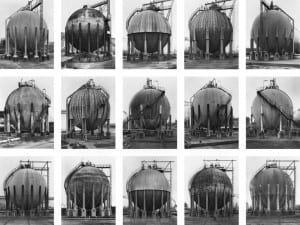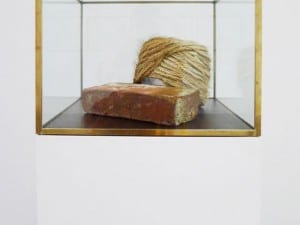Uniting 1,318 creatives from 26 courses, Nottingham Trent University’s 2019 summer show presents inspiring work by a new generation of creative talent. Michael Marsden, Dean of the School of Art & Design, discusses the exhibition, exploring how graduates use collaboration to explore and respond to key themes of sustainability, technology and identity.
A: Are we seeing any combination of practices in this year’s degree show, including interdisciplinary approaches or use of new technologies?
MM: Four departments sit within the School of Art & Design: Visual Arts, Visual Communication, Fashion Management, Marketing and Communication and Fashion Textiles and Knitwear Design. The annual Degree Shows present our final year students’ work, covering a broad spectrum of subjects and specialisms. I am always impressed at how they embrace new technology, and collaboration is something that we actively encourage within the School across all subject areas. This is shown through those working across disciplines, as well as on live industry briefs set by fashion, beauty and lifestyle brands.
Within Fine Art, performance practice is increasingly popular. The course has developed a cross-disciplinary approach, and students draw influence from all facets of contemporary art. Meanwhile, Fashion and Photography has collaborated to investigate eco-friendly ways of producing garments – as well as looking at consumers who incorporate sustainable clothing into their wardrobe. Six of our Animation graduate films have soundtracks and effects produced by Sound and Music students. Elsewhere, Textile Design Students have integrated metal, wood, ceramics, glass and even concrete into their collections. Several practitioners are working with film to capture materials in motion, using advanced retroreflective yarns, colour changing thread and e-textiles.
A: Are there any common themes which are uniting the portfolios?
MM: A recurrent theme this year is health and wellbeing – mental health specifically. Photographers have been working within the community to look at the connection between society and nature, asking how this can improve physical and mental wellbeing to inspire change. Our Fashion Management, Marketing and Communication students have been delving into “digital detox” and the way social media impacts upon society and the individual. Fashion and Textiles practitioners are challenging stereotypes of gender and body image, designing for the senses to engender positive mental health. Within Fine Art there is also an interest in gender and trans issues, whilst contemporary perceptions of race, nation, identity and representation are explored more broadly. Students are increasingly using their creative talents to have a positive impact on society, which is inspiring to see.

A: How are graduates responding to our socio-political / environmental climate?
MM: Over the past few years, graduates have used and incorporated project themes focusing on sustainability and consumption as well as community and identity. Politically, there is a film by one of our Animation students which tells the story of a girl and her father fleeing Syria, whilst in Graphic Design there are projects focusing on the class divide, environment, pollution and healthcare. This year Graphic Design has seen the largest number of students undertaking projects for “Creative Conscience” – an organisation which aims to inspire creatives to apply their talents to socially valuable projects.
Within all our Fashion and Textiles courses, there is a growing interest in sustainability and responsibility in design. This begins with the sourcing of materials, but also includes zero waste in manufacture through practices such as “knitting to shape.” Sustainable backstories are behind every collection on the Textile Design course. For example, Fashion Accessory Design students are resisting fast fashion and exploring the need for change in the way we design, and the types of materials used. They are recycling plastics, fish skin and a wide range of sustainable leathers. One practitioner took images of sea waste washed up on UK shorelines and used this to inspire the content of her collection, which includes a piece cut from an old storm jacket worn by fishermen.
A: How are the graduates looking at ethical / humanitarian issues?
MM: Within our Fashion Management, Marketing and Communication courses ethical trade is a common theme. The design of gender-neutral clothing is also increasingly popular, whilst feminism is also a key topic. Within Fine Art, students are also exploring gender equality and social liberty. There is certainly a shift towards ideas and debates of post-gender and trans identity.
One of our Knitwear students is from Israel and has looked at the plight of child soldiers, using powerful images of their clothing as a narrative in her collection. It brings our attention to the manipulation of children to fight and act as human bombs. She is mindful of the provocative nature of the theme, and that some – like herself – have the privilege of choice, which others do not. Elsewhere in Fashion and Textiles we are looking at material sourcing, minimising waste, re-purposing and re-use, designing for longevity, emotional durability and recylability.
In addition, Animation students have produced two interesting films this year on the subject of addiction. In Photography there are students looking into the refugee crisis, hidden disabilities and period poverty.

A: In what ways are the graduates looking at creating innovative solutions through design?
MM: The way graduates are embracing a multitude of approaches and technologies in their practice has impressed me. Within Textile Design, students have been studying material intelligence, which includes new and advanced resources that increase performance potential within fashion, interior and architectural settings. Elsewhere, Knitwear students have combined knitted fabrics with print processes to change the character of the knitting in its performance and its surface. One project integrates decorative beads as part of the knitting, which creates a pliable and delicate fabric with stretch.
A: What are you hoping audiences take away from visiting the show?
MM: I hope that people leave not only impressed by the creative talent and artistry on display, but also by how forward-thinking our graduates are. Students are producing work that is challenging; focussing on current issues covering a wide range of topics such as the environment, poverty, the refugee crisis and mental health. I want people to be inspired by what they see; to feel informed, stimulated and entertained by the variety of visual styles and crafts.
The exhibition runs 1-9 June. Find out more here.
Lead image: Emily Ryalls, BA (Hons) Photography.





